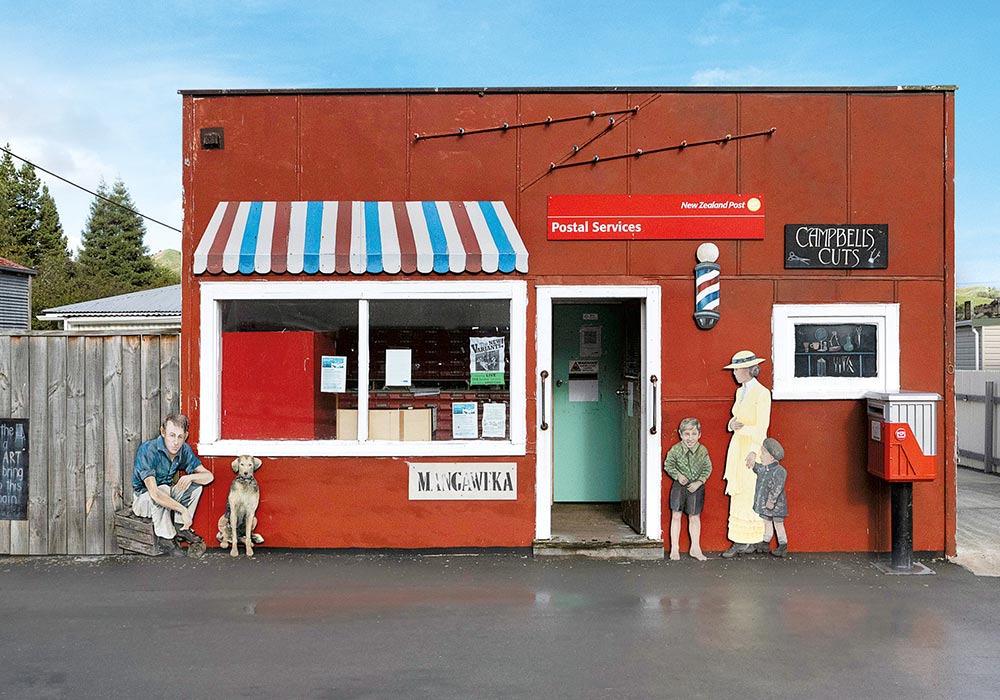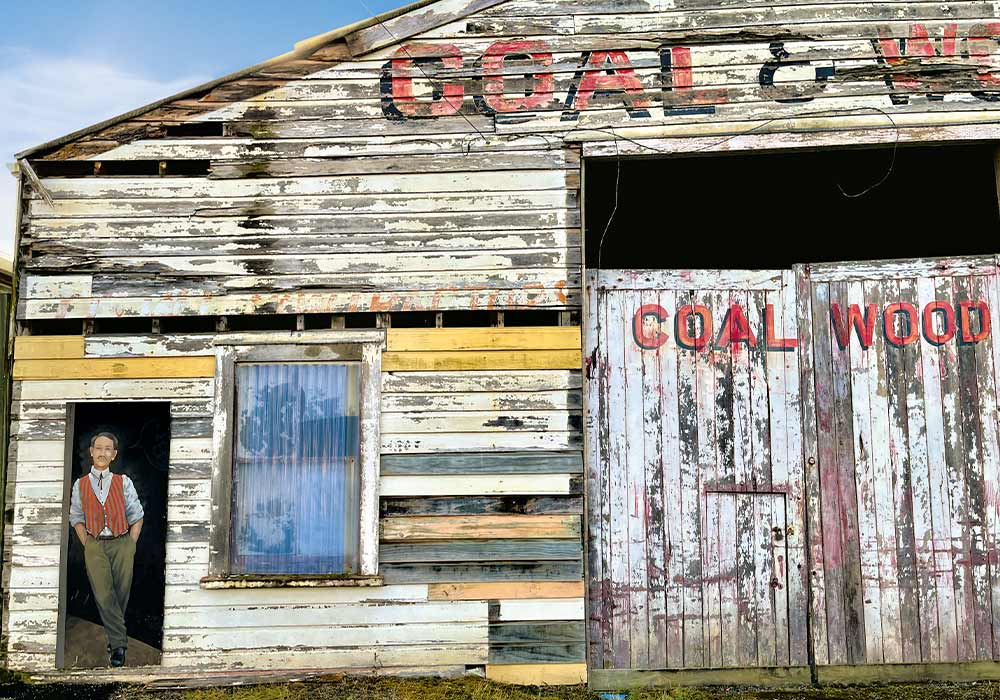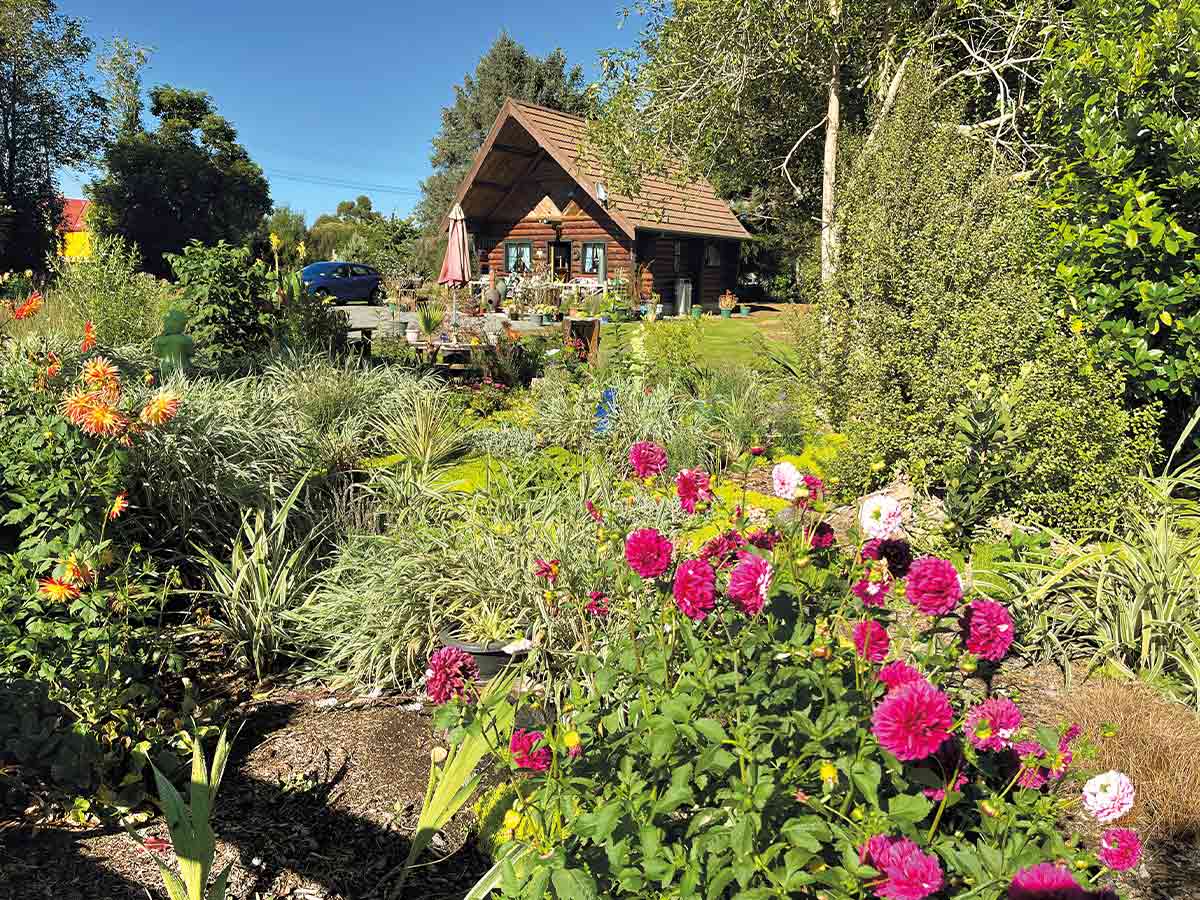Jill Malcolm comes across the unexpected in the village of Mangaweka, a truly tiny town with an estimated population of approximately 200
The tiny blink-and-miss town of Mangaweka, situated along State Highway One in the Rangitikei, once boldly announced its presence with a DC3 aeroplane hoisted aloft and emblazoned from nose to tail with Cookie Time biscuits. It isn’t there now. This recognisable landmark has been carted off to Shannon to be restored, and so it might seem that there’s nothing much to warrant a second look at Mangaweka, a village of 200 souls.
Tucked in behind SH1, we found the old main road of Broadway. Once the town centre, it now looks like a film set for a period movie and it speaks of the time when Mangaweka was a much busier place. Established in 1885, the town expanded and flourished when the bridges, tunnels, and the impressive Mangaweka Viaduct were being constructed as part of the Main Truck Line. A hundred years later, its raison d’être was over, and its future was further threatened when in 1980, SH1 bypassed Broadway.
But this tiny town lives on. Among the historic buildings still stoically standing on Broadway are the Hardware and General Merchant’s Store, the Coal and Wood warehouse, Mangaweka Garage, the old post office, the Art Deco hotel, the old BNZ Bank, and the dairy.
Visions of the past

To increase the population of Mangaweka and give context to the town’s earlier history, the street features numerous murals and cut-out figures dressed in 1800s apparel, which were created by artist and ex-Mangaweka resident, Julie Oliver. I was perplexed to come across a small church organ on the pavement under the rusting overhang of the Merchant’s Store. As I stood pondering its unlikely location, two men and a dog emerged from the store’s doorway. They were out for a walk.
“It’s just there for anyone to play,” said one. I think his name was Graham. “D’ya want a tune?”
He sat down, pumped the bellows, and set the old street alight with a wobbly rendition of Amazing Grace.
There must once have been plenty of worshippers in Mangaweka. The elegant St Patrick’s and the Assembly of God churches are still in use, another is now a residence, and on SH1, a church has been turned into an enticing-looking art gallery. Curiously, on an exterior wall of this bright yellow building is an enlarged portrait of a Māori elder wearing a bowler hat and European-style suit. It looked very much like a well-known painting by Charles Goldie. I wasn’t far wrong.
I knocked on the bright blue door of the gallery. A man looked up from the machinery he was fiddling with in the backyard and called out cheerfully, “Hang on a minute; I’ll open up for you.”
“I don’t want to interrupt your work.”
“Not at all,” he said, wiping his hands on his orange overall. “The gallery is my main gig.”
Richard Aslett, artist, photographer, and musician came through Mangaweka in 2006, saw the Anglican church for sale, bought it, set up his art gallery, joined a band, and has been there ever since.
Inspiration for creative expression

Artists have played a large part in the history of this slice of small-town New Zealand. In 1971, artist Robin White and poet Sam Hunt made a road trip to Mangaweka. From that outing, Robin created her iconic image of a truck parked outside an old building called Puha Palace on Broadway, which now hangs in Wellington’s Te Papa museum. Sam stayed on for a while, living in the Puha Palace, and was inspired to write the Mangaweka Road song.
No place more I’d like to bring you than
this one-pub town
approached in low gear down
the gorges through the hill
Most famously, however, Mangaweka was the birthplace and first home of the country’s renowned art forger, the crafty Karl Sim, who forged at least 50 works of artists such as Colin McCahon, Rita Angus, Frances Hodgkins, and Charles Frederick Goldie.
In 1985, Sim (then running his studio in Foxton) was caught, tried, convicted, fined $1000, and made to paint the Foxton Town Hall and public toilets as punishment.
He later changed his name to Carl Feodor Goldie so he could legally sign his copies CF Goldie. When he painted the mural on the Mangaweka Art Gallery wall, he signed it under that name. The portrait is of a laughing Māori dignitary, Te Aho te Rangi Wharepu, which Karl titled ‘A Good Joke’.
Before he died in 2013, Karl (aka Goldie) inspired an event that has helped put Mangaweka back on the map. Every two years, the country’s budding artists are invited to submit their own forgeries in the Mangaweka Fakes & Forgeries competition. On judging day, the town comes alive with markets and music.
“Although most entries come from New Zealand, there have also been some from Australia, America, and England,” said the event’s organiser, Richard Aslett. “This year’s event is being held on 21 October, which happens to be the 10th anniversary of Karl Sim’s death.
Colossal cliffs created from clay

Close to the village, another lure for artists and photographers is the spectacular gorge on the Rangitikei River’s long journey to the sea. I gazed into the valley from the lip of this canyon to watch the river, the colour of dirty milk, wind like a thin snake between the ice-white cliffs of papa clay. Deep in the ravine, where the cliffs rear up from the valley floor, is the landscaped Awastone River Haven Camp and Café owned by the Eames family who have also operated kayaking and rafting trips on the river for the last 35 years. It has good RV facilities but punches a bit of a hole in the budget. If you want to spend a night in the gorge that’s easier on the pocket, the alternative is on the other side of the river, in the same valley. This site is on three levels and although the facilities are few, it has both powered and not-powered parking. The two campgrounds are joined by the newly opened Mangaweka Bridge. It lies alongside the historic crossing built in 1915, which is the last cantilevered bridge left in New Zealand and will be retained for use by cyclists and walkers.
We didn’t stay in either of these camps. Instead, we made our way to the parking area at the Rangatira Golf Course off SH1 overlooking the gorge on the way to Hunterville. CSC motorhomers are welcome to stay here overnight for a small fee. The course is three-tiered, with the lowest holes spreading over the Rangitikei River valley beneath the towering backdrop of the Mangaweka cliffs. Its unique feature is a creaking cable car that transports players up a cliff face from the 18th green to the clubhouse.
We imbibed a wine or two in the 19th where a group of congenial local golfers assured us that the Mangaweka area was the best place to live in New Zealand. In the motorhome parked next to us, were anglers, Joachim and Pamela, who had come to fish for the sizeable brown and rainbow trout that inhabit the river’s cold water.
We hunkered down to enjoy a quiet and starry night. It lasted until about four in the morning when a cavalcade of goliath trucks began growling along SH1, their silhouettes be-jewelled with bright red lights like a carnival parade. Even so, staying in this singular environment with Rangitikei’s tiny town close by was a highlight of our three-month odyssey.
The Fake & Forgeries competition will be held on Saturday, 21 October 2023. See entry instructions on mangawekagallery.webs.com.






